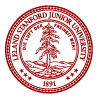ch 5 reading response
I am interested in Artful Design’s Principle 5.4: Bodies Matter!
The idea that our body is the ultimate instrument is true right now, and it’s interesting to reflect on how this concept has transformed over years of technological development. We of course started creating music with our voice and hands and limbs, and technology has opened up the scope of that. Page 210 displays some common methods of physical musical actions, like shaking, striking, plucking, tapping, sliding, and twisting. These all existed with rudimentary instruments, and the introduction of synthetic and electronic music has changed the game. From audio sequencers to music production software to computational music languages like ChucK, our hands and tapping/typing actions have surged to the forefront of many genres of music creation.
When reflecting on how our bodies’ relationships with music has morphed over time, I wonder how it will change in the future. My mind is immediately drawn to the emerging field of Brain-Computer Interfaces, where our bodies may take even more of a backseat in the creation of music. What if you didn’t even have to tap, shake, or type? What if you could just imagine music in your head and translate that to an immediate physical manifestation? While this technology doesn’t quite exist in a robust manner yet, touchless music definitely does. Eye tracking technology can let you create music without touching the instrument in question. Even as this field grows, I don’t expect it to take the forefront of music. Plucking and tapping might no longer be “necessary,” but there is still a unique and undeniable joy that comes from fine-tuning our bodies to produce music. I’ve been learning how to play the guitar for the past couple months, and the deep satisfaction I feel when mastering a new chord or finger trick cannot be replaced -- just because I might be able to replace a bar chord with a sound induced by a series of blinks doesn’t mean I want to do so.
After we master the brain’s direct creation on music, there’s another aspect of music that can also be divorced from human bodies. It is controversial as to whether or not AI-generated music should count as music, but this kind of music will nevertheless only have an increased presence in our lives, and I’m interested to see how that enhances, competes with, and meshes with existing body-made music.

